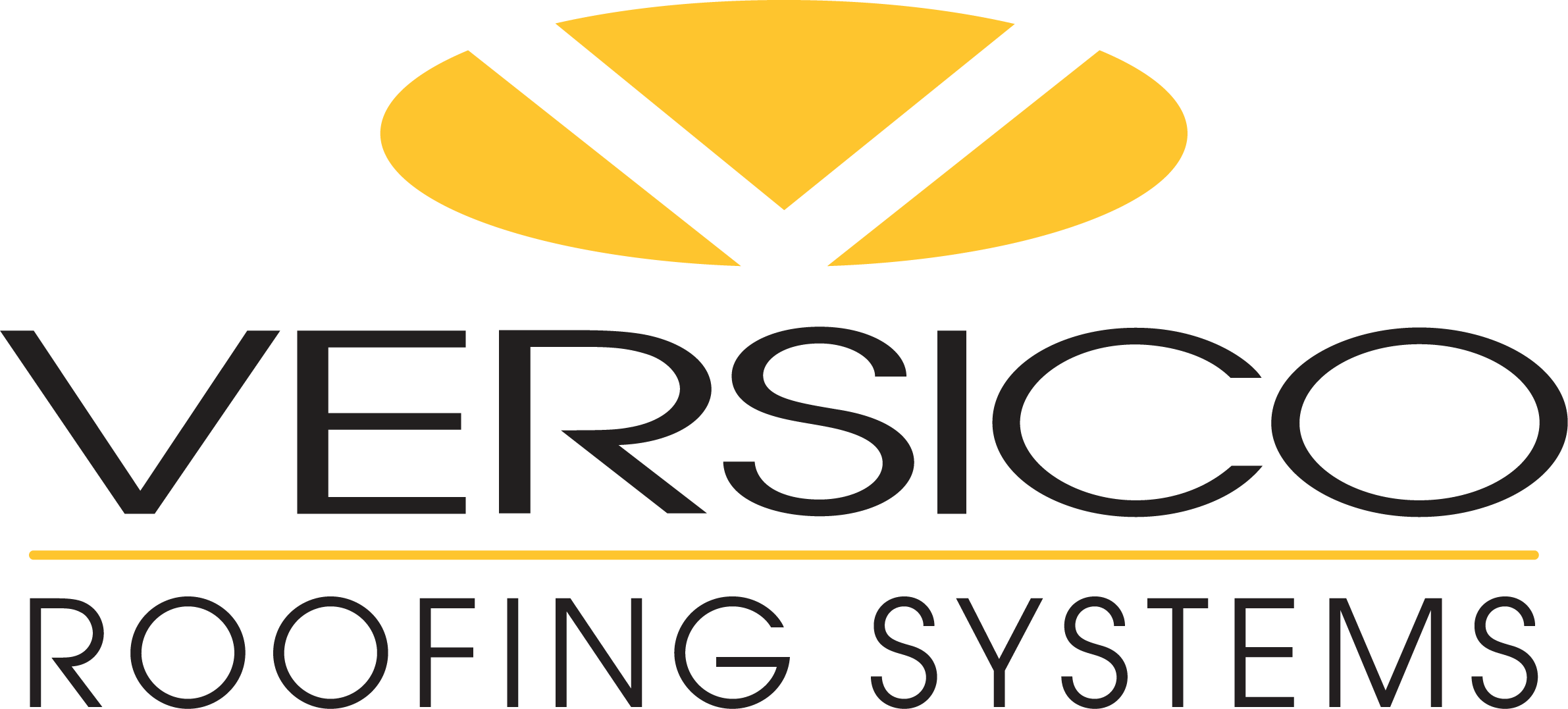TechNews: Preventing Roof Damage from Ice Melts, Moisture, and Air Infiltration
Ice melts
Ice melts that contain potash, urea, calcium chloride, and/or sodium chloride (common table salt) are safe to use with Versico’s EPDM, TPO, and PVC membranes, as well as exposed VapAir™ Seal 725TR. Be cautious if using ice melts on or around metal roof components! Ice melts will discolor copper, corrode and pit aluminum, and accelerate the oxidation (rusting) of non-stainless steel. It is the owner’s responsibility to take appropriate precautions to protect metal components.
If adhering new insulation directly to the surface of 725TR, make sure there is not excessive residue left behind from the ice melt products. The surface of the 725TR should be clean and dry when adhering the insulation. Use a garden hose to spray off any excessive residue left over from ice melt products.
Moisture damage and air infiltration
While occupancy-generated moisture is usually addressed through the use of a vapor barrier, construction-generated moisture can be reduced through a number of techniques. Sealing gaps between the structural deck and walls, as well as gaps around penetrations and at steel deck end laps, is critical. Using multiple layers of insulation, installed with the joints staggered, can provide an additional barrier against air infiltration and reduce moisture concentration in the roofing assembly.
Construction-generated moisture may also be reduced by careful project scheduling (coordinating roofing installations with the concrete pour schedule) and building dehumidification prior to occupancy.
On structural concrete decks, it is important to seal any gaps between the structural deck and walls and those around penetrations. Unsealed gaps allow hot humid air from within the building to infiltrate the roofing assembly and possibly condense during cold weather. The same phenomenon can also occur on steel decks where gaps are not sealed or vapor barriers are not used.
For more information about construction-generated moisture and mitigation tactics, check out this article from the National Roofing Contractors Association (NRCA) and this 2020 TechNews post.
Ice melts that contain potash, urea, calcium chloride, and/or sodium chloride (common table salt) are safe to use with Versico’s EPDM, TPO, and PVC membranes, as well as exposed VapAir™ Seal 725TR. Be cautious if using ice melts on or around metal roof components! Ice melts will discolor copper, corrode and pit aluminum, and accelerate the oxidation (rusting) of non-stainless steel. It is the owner’s responsibility to take appropriate precautions to protect metal components.
If adhering new insulation directly to the surface of 725TR, make sure there is not excessive residue left behind from the ice melt products. The surface of the 725TR should be clean and dry when adhering the insulation. Use a garden hose to spray off any excessive residue left over from ice melt products.
Moisture damage and air infiltration
While occupancy-generated moisture is usually addressed through the use of a vapor barrier, construction-generated moisture can be reduced through a number of techniques. Sealing gaps between the structural deck and walls, as well as gaps around penetrations and at steel deck end laps, is critical. Using multiple layers of insulation, installed with the joints staggered, can provide an additional barrier against air infiltration and reduce moisture concentration in the roofing assembly.
Construction-generated moisture may also be reduced by careful project scheduling (coordinating roofing installations with the concrete pour schedule) and building dehumidification prior to occupancy.
On structural concrete decks, it is important to seal any gaps between the structural deck and walls and those around penetrations. Unsealed gaps allow hot humid air from within the building to infiltrate the roofing assembly and possibly condense during cold weather. The same phenomenon can also occur on steel decks where gaps are not sealed or vapor barriers are not used.
For more information about construction-generated moisture and mitigation tactics, check out this article from the National Roofing Contractors Association (NRCA) and this 2020 TechNews post.
Up Next
December 28, 2023
TechNews: Wintertime Storage and Installation Tips
Here are some wintertime storage and installation tips for Versico’s adhesives, primers, and QA accessories.
November 30, 2023
TechNews: Top Air and Vapor Barrier Installation Errors
Avoiding some of the most common installation errors will ensure your air and vapor barrier installation is a success.
October 26, 2023
TechNews: Using ReadyFlash Technology to Your Advantage in Unpredictable Weather
Changes in season, weather, and temperature can drastically affect the flash-off times of membrane bonding adhesives. Producing consistent and efficient membrane-to-substrate adhesion can be difficult due to these uncontrollable environmental factors.
